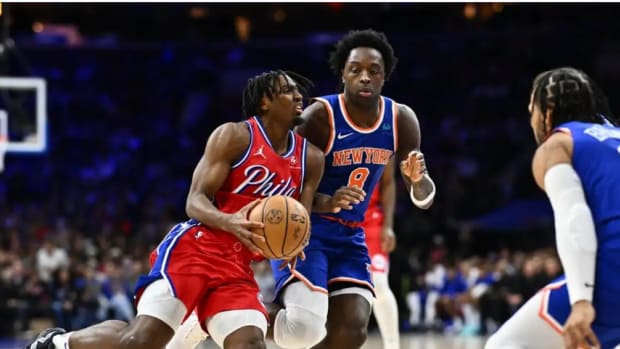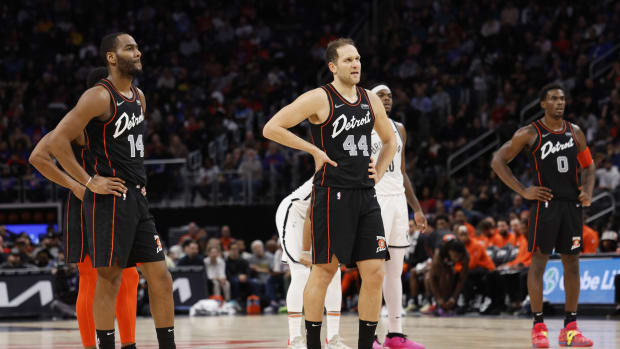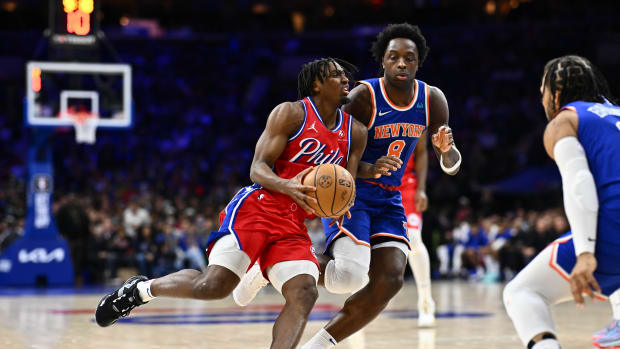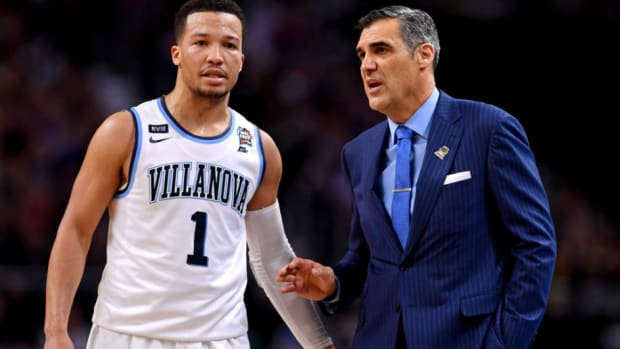What Is Mike Miller's Mandate with the Knicks Now?
It's been a period of relative success for the New York Knicks on the court, something overshadowed by the trade deadline and the decision to alter the team's executive structure.
But even a loss to Atlanta in double overtime doesn't dent their recent form much, with wins in four of five games.
Here's the part that's potentially problematic: how and why they're utilizing the players they are, and the extent to which the trade deadline coming and going hasn't changed much.
I asked Mike Miller back on January 31 about what his mandate was from the organization, a confusing thing for any interim coach on a short-term deal with a team that needs to be thinking in years, not days.
"We have stayed with the same philosophy," Miller said. "The game will dictate how we use the guys."
He hasn't deviated from that, at least not so far. And it's hard to understand why within the broader picture of the Knicks.
Let's set the scene.
Even with this current hot streak, the Knicks are 17-37. That's good for 12th in the Eastern Conference, 5.5 games behind Orlando for the right to get swept by the Milwaukee Bucks in the first round of the playoffs.
Even if the Knicks managed to rally, such an outcome would do little for the long-term growth of the team, hurt their 2020 draft position, and possibly even provide false hope based on a small sample size.
Then again, such a run is almost impossibly unlikely.
That leaves us with what the final 28 games ought to be: a way to evaluate and develop players who could be part of the roster in 2020-21 and beyond.
That list includes people under contract for next year, which skews toward the younger players, and it certainly doesn't apply to veterans who will be out of contract at the end of the season.
Rookie scale deal players, and those whose options were picked up for 2020-21, are: Frank Ntilikina, Dennis Smith Jr., Mitchell Robinson, Kevin Knox, RJ Barrett. These are clearly the most important development priorities, not necessarily in that order, but all on the list.
You can make the argument that Julius Randle, under contract next year, and Elfrid Payton, who can be brought back for $8 million if he isn't cut by June 28, can and should be evaluated for their medium-term value to the Knicks.
These players don't belong anywhere near the future planning for the Knicks, as veterans with a track record to indicate what they can provide, and aren't sources of future value beyond 2020-21 without additional moves being made: Bobby Portis, Reggie Bullock, Wayne Ellington and Taj Gibson can all return next season. Portis has a team option, the rest are signed. But who and what they are as players is known, and their minutes aren't helping the younger players figure that out.
So how is this all shaking out?
Well, not exactly the way the Knicks should be approaching it, but defensible.
It's three games since the trade deadline — again, the moment when veterans went from potentially garnering useful assets in return to playing out the string — and the four biggest minutes loads have gone to Randle, Payton, Bullock and Ellington.
We covered earlier how Randle makes some sense — can he be a number one option, if so, knowing this is a significant thing with at least another year (and potentially two) on his current deal. Payton is where it starts to get problematic: if he's playing massive minutes at the point, it denies the Knicks a chance to evaluate and develop Smith Jr. or Ntilikina, who rank ninth and eleventh on the team in minutes since the trade deadline.
But Bullock, who has entered the starting lineup, and Ellington, who has been a key rotation member in this three-game span? We know who these players are. Everybody does. Frankly, in a more settled front office, it is almost certain both would have been dealt, give their obvious value as spacers to a contending team. They are signed to team-friendly contracts next season, however.
Even so, any minute either one is getting ahead of Kevin Knox, a player drafted ultra-young who needs minutes more than virtually anyone, is a problem for figuring out what Knox can be.
And the same is true for Gibson ahead of Robinson. Accordingly, this has been a brighter spot so far, with 73 minutes for Robinson, 59 for Gibson, even with the former dealing with foul trouble.
And not to be left out: Allonzo Trier and Damyean Dotson have been DNP-CD since the trade deadline. They hit the market this summer. That may well be the Knicks declaring what they see both players' future value to the team as, but on-court time to figure that out wouldn't be a bad idea.
Overall, though, the framework is something the Knicks need to be thinking about. The game should not be dictating how to prioritize minutes. The future must be.
We'll be tracking how the Knicks do that over the final 28 games.




